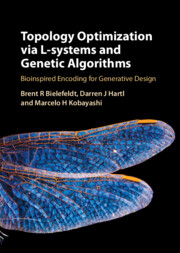Refine search
Actions for selected content:
2 results

Topology Optimization via L-Systems and Genetic Algorithms
- Bioinspired Encoding for Generative Design
-
- Published online:
- 13 June 2025
- Print publication:
- 24 April 2025
3 - Introduction to L-systems and Turtle Graphics Interpretation
-
- Book:
- Topology Optimization via L-Systems and Genetic Algorithms
- Published online:
- 13 June 2025
- Print publication:
- 24 April 2025, pp 86-111
-
- Chapter
- Export citation
